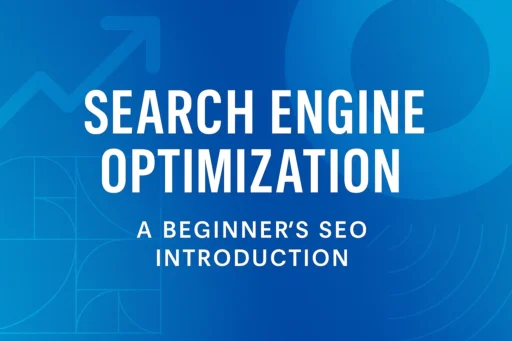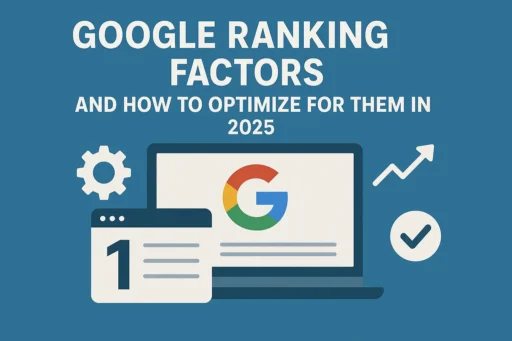Title and meta description tags for SEO remain among the most critical elements of your digital marketing strategy in 2025. These HTML elements serve as your website’s first impression in search results, directly influencing whether users click through to your content. At Search Savvy, we’ve witnessed how properly optimized metadata can transform a website’s click-through rates and overall search performance, even as Google’s algorithms continue to evolve with artificial intelligence and semantic search capabilities.
Understanding how to craft compelling title and meta description tags has become more nuanced than ever before. While these elements have been foundational to SEO for years, the landscape has shifted dramatically with the rise of AI-powered search experiences, voice search optimization, and Google’s increasing tendency to dynamically rewrite metadata. This comprehensive guide will walk you through everything you need to know about creating effective title and meta description tags that resonate with both search engines and human users in 2025.
What Are Title and Meta Description Tags?
Title and meta description tags for SEO are HTML elements that provide search engines and users with essential information about your webpage’s content. The title tag, also known as the meta title or SEO title, appears as the clickable blue headline in search engine results pages (SERPs). It’s wrapped in <title> tags within the <head> section of your HTML code and serves as a concise summary of your page’s main topic.
Meta descriptions, on the other hand, are HTML attributes that offer a brief summary of your page’s content, displayed as the gray text beneath the title tag in search results. While meta descriptions don’t directly impact search engine rankings, they play a crucial role in influencing user behavior and click-through rates (CTR). According to Search Savvy’s research and industry data, search engines use click-through rate (CTR) to determine whether you’re a good result, and if more people click on your result, Google considers you a good result and will move you up the rankings based on your position.
Why Are Title and Meta Description Tags Important in 2025?
Title and meta description tags for SEO have evolved beyond simple keyword placement to become sophisticated tools for user engagement and search visibility. In 2025, with advancements in AI, search engines are becoming more sophisticated in understanding context, meaning and user intent, and Google is increasingly rewriting meta descriptions dynamically to better match users’ search queries and provide more relevant results.
The importance of these elements extends to several key areas:
Enhanced Click-Through Rates: Well-crafted metadata acts as compelling ad copy, enticing users to choose your result over competitors. At Search Savvy, we’ve observed that optimized title and meta description tags can increase CTR by 20-30% in competitive niches.
Improved Search Engine Understanding: Meta data serves as a direct communication channel between your website and search engines, shaping how search engines interpret your content and how users perceive your brand in search results.
Voice Search Optimization: With voice search and AI tools growing, metadata must anticipate and answer specific, conversational queries as users search more naturally.
Reduced Bounce Rates: Accurate meta tags set clear expectations for visitors, ensuring that users who click through find the content they’re actually seeking.
How Do Title Tags Work in 2025?
Title tags directly impact how search engines understand and rank your content. The title tag is an HTML element that specifies the title of a webpage, shown in SERPs as a clickable headline, and it influences rankings, click-through rates (CTR), and discoverability, making it one of the most important on-page SEO factors.
In 2025, Google has become more aggressive in rewriting title tags. Studies in Q1 2025 showed Google was rewriting title tags about 76% of the time, meaning obsessing over perfect character counts is less important than getting the key information into the title early and making it relevant to the page. This shift emphasizes the importance of front-loading your most critical keywords and information.
Key Title Tag Requirements for 2025
Optimal Length: Keep titles concise at 50-60 characters for desktop, with mobile displays extending to 650 pixels or 2 lines. However, length is measured in pixels rather than characters, so wider letters take up more space.
Keyword Placement: Place your primary keyword as early as possible in the title tag. This ensures visibility even if Google truncates your title in search results.
Action Words and Trigger Words: Use compelling language that drives clicks, such as “how,” “what,” “why,” “best,” “ultimate,” and “guide.” These words signal value to searchers.
Brand Inclusion: When appropriate, include your brand name at the end of the title, separated by a dash or pipe symbol.
What Makes an Effective Meta Description in 2025?
Meta descriptions have evolved from simple keyword repositories to persuasive copy that must capture user intent while remaining concise. Meta descriptions should focus on addressing user intent, highlight value, and stay within 140-160 characters, and Google rewrites 60-70% of them, so ensure clarity and relevance.
At Search Savvy, we recommend treating meta descriptions as elevator pitches for your content. They should communicate the unique value proposition of your page and compel users to click through. The best meta descriptions in 2025 share several characteristics:
Conversational and Intent-Focused: You must reflect the shift by focusing on intent-based, conversational phrases rather than rigid keyword optimization, and don’t just include keywords but reflect the overall theme or context of the content.
Clear Call-to-Action: Include action-oriented language like “Learn More,” “Discover,” “Get Started,” or “Find Out How” to encourage clicks.
Specific Value Indicators: When relevant, include specific details like pricing, specifications, dates, or unique selling points that differentiate your content.
Active Voice: Write in active voice for better clarity and engagement, making your description feel more immediate and compelling.
How to Write Title Tags That Drive Clicks
Title and meta description tags for SEO require strategic thinking and careful optimization. Here are the proven best practices for creating effective title tags in 2025:
1. Front-Load Your Primary Keyword
Position your main keyword within the first 50 characters of your title tag. This ensures it’s visible even on mobile devices and clearly signals your page’s topic to both users and search engines.
Example:
- Good: “SEO Audit Checklist: Complete Guide for 2025”
- Poor: “The Complete Comprehensive Guide to Performing an SEO Audit in 2025”
2. Create Unique Titles for Every Page
Every page of your website needs its own unique title tag; DO NOT duplicate title tags. Duplicate titles confuse search engines and dilute your SEO efforts by making it unclear which page should rank for specific queries.
3. Use Shorter Titles to Stand Out
In 2025, there’s a focus on reducing title length to stand out and capture attention, and when most titles in the SERPs are between 45 and 55 characters, a shorter title that includes keywords and possibly a number can draw attention to your listing.
4. Avoid Keyword Stuffing and Generic Phrases
Never create titles like “SEO Services, SEO Agency, Best SEO Company” or use vague phrases like “Home” or “Services.” These provide no value to users and may be penalized by search engines.
5. Incorporate Numbers and Specificity
Titles with numbers perform exceptionally well because they set clear expectations. Examples include “7 Ways to Boost Conversions” or “Complete 2025 Guide.”
How to Craft Compelling Meta Descriptions
Meta descriptions serve as your opportunity to persuade searchers that your content is worth their time. Here’s how to create meta descriptions that convert browsers into visitors:
1. Keep Within Optimal Character Limits
Aim for 150-160 characters and summarize the page’s value proposition in one sentence while using natural language that matches voice search queries. Mobile displays may show slightly fewer characters, so prioritize your key message early.
2. Include Your Target Keyword Naturally
While meta descriptions don’t directly influence rankings, including relevant keywords helps users quickly identify that your content matches their search intent. When Google displays your meta description and a user’s search query matches text within it, those terms appear bolded, making your result more noticeable.
3. Write Unique Descriptions for Each Page
Create a unique meta description for each page, keeping it between 50-160 characters, and use consistent formatting and structure across all tags. If you don’t provide a meta description, Google will automatically pull text from your page, which may not effectively represent your content.
4. Address User Intent Directly
Answer the implied question in the searcher’s query. If someone searches “how to fix leaky faucet,” your meta description might say: “Learn how to fix a leaky faucet in under 10 minutes with this step-by-step guide. No plumber needed—save money with our DIY solution.”
5. Add Specific Details When Relevant
For e-commerce pages, include product specifications, pricing, availability, or unique features. For informational content, highlight what makes your guide comprehensive or different from competitors.
What Common Mistakes Should You Avoid?
Title and meta description tags for SEO optimization can go wrong in several ways. Avoid these common pitfalls that can undermine your efforts:
Duplicate Metadata Across Pages: This confuses search engines about which page should rank for specific queries and provides a poor user experience when multiple results from your site appear similar.
Keyword Stuffing: Overloading your title or description with keywords makes your content look spammy and reduces click-through rates.
Vague or Generic Language: Descriptions like “Welcome to our website” or “Learn more about our services” provide no compelling reason to click.
Misleading Information: Never promise content that doesn’t exist on your page. This leads to high bounce rates and damages your site’s credibility with both users and search engines.
Ignoring Mobile Optimization: With mobile searches dominating, ensure your metadata displays effectively on smaller screens by front-loading important information.
Forgetting to Update Old Content: As your content evolves, your metadata should too. Regularly audit and refresh your title and meta description tags to reflect current offerings and SEO best practices.
How to Implement and Monitor Your Metadata Strategy
Title and meta description tags for SEO require ongoing optimization and monitoring. At Search Savvy, we recommend this systematic approach to implementation and tracking:
Using Google Search Console for Optimization
Google Search Console can help you identify pages on your site where meta-data can be improved—those pages will normally have a high number of impressions but a low click-through rate (CTR), meaning lots of searchers are seeing a link to your page, but few choose to click it.
Step 1: Identify Low-Performing Pages
Navigate to the Performance report in Google Search Console and filter for pages with high impressions but low CTR. These represent your biggest opportunities for improvement.
Step 2: Analyze Competitor Metadata
Search for your target keywords and examine what competing pages are doing with their titles and descriptions. Look for patterns in high-performing results.
Step 3: Implement Changes Strategically
Update your metadata using your CMS or by directly editing HTML. Most modern platforms like WordPress, Shopify, and Wix offer plugins or built-in tools for easy metadata management.
Step 4: Track Performance Over Time
Use Google Search Console to compare search results from before you made a change to after the change was implemented, and the table and graph will reveal how your search rankings, CTR, and other metrics have changed over time.
Leveraging Schema Markup for Enhanced Visibility
Structured data will continue to be critical in helping search engines understand your page’s content and display rich results, and Google increasingly rewards websites that implement structured data. Adding schema markup from Schema.org can help your pages appear with enhanced features like star ratings, pricing, availability, and FAQ sections directly in search results.
Schema.org is a collaborative project involving major search engines like Google, Bing, Yahoo, and Yandex that provides standardized vocabulary for describing content on web pages. With over 45 million web domains using schema markup on their pages, implementing structured data has become essential for modern SEO strategies.
You can validate your schema markup using Google’s Rich Results Test or the Schema Markup Validator to ensure your structured data is correctly implemented and eligible for rich results in search.
Testing and Iteration
Metadata optimization isn’t a one-time task. Regularly test different approaches:
- A/B test variations of titles and descriptions for high-traffic pages
- Experiment with different call-to-action phrases
- Try question-based titles versus statement-based titles
- Monitor seasonal trends that might require metadata updates
Why Search Savvy Recommends These Practices
According to Search Savvy’s extensive experience with metadata optimization across diverse industries, businesses that implement these best practices typically see measurable improvements within 4-8 weeks. The key is consistency, relevance, and a user-first approach that prioritizes genuine value over gaming the system.
Title and meta description tags for SEO success in 2025 requires balancing technical precision with persuasive copywriting. While AI and machine learning have made search engines more sophisticated, the fundamental principle remains unchanged: create metadata that accurately represents your content while compelling users to click through.
FAQ: Title and Meta Description Tags for SEO
Q: How often should I update my title and meta description tags?
A: Review your metadata at least quarterly, especially for high-traffic or cornerstone pages. If a blog post is getting clicks but not converting, your meta might attract the wrong folks, or if rankings drop, your tags might need a refresh to better reflect updated content or new search trends. Use Google Search Console to identify pages with high impressions but low CTR for immediate optimization opportunities.
Q: Does Google always use my meta description, or will they rewrite it?
A: Google rewrites 60-70% of meta descriptions, and in 2025, this trend has continued with AI-driven dynamic rewriting. However, providing a well-optimized meta description gives you the best chance of having your message displayed. Even when Google rewrites your description, it often pulls from your original meta description combined with page content, so writing a quality description still matters.
Q: What’s the ideal length for title tags and meta descriptions in 2025?
A: Keep titles under 60 characters to avoid truncation and aim for 150-160 characters for meta descriptions. However, Google measures display space in pixels rather than characters, so wider letters like “W” and “M” take up more space than narrower ones like “i” and “l.” Focus on front-loading your most important information rather than obsessing over exact character counts.
Q: Can duplicate meta descriptions hurt my SEO?
A: While duplicate meta descriptions won’t directly penalize your site, they create a poor user experience when multiple pages from your site appear similar in search results. This confusion can reduce click-through rates. Instead of using duplicate descriptions, either write unique ones for each page or leave them blank so Google generates unique snippets from your page content.
Q: Should I include my brand name in every title tag?
A: Include your brand name when it adds value or recognition, typically at the end of the title separated by a dash or pipe. For well-known brands, this can improve CTR. However, for less established brands or when character space is limited, prioritize descriptive keywords over brand inclusion. Exception: Always include brand names on your homepage and key landing pages.
Q: How do I optimize for voice search with my metadata?
A: With voice search and AI tools growing, meta descriptions should anticipate and answer specific, conversational queries as users search more naturally. Use natural language, question-based formats, and conversational phrasing in your metadata. Focus on intent-based keywords rather than rigid keyword optimization, and consider how someone would verbally ask for the information your page provides.
Ready to transform your metadata strategy? At Search Savvy, we specialize in comprehensive SEO optimization that drives measurable results. Our team can audit your current title and meta description tags, identify opportunities for improvement, and implement data-driven strategies that increase your click-through rates and search visibility.
For more SEO insights and digital marketing strategies, explore our resource library or visit Google Search Central for official documentation and best practices. You can also check out Schema.org’s getting started guide to learn more about implementing structured data on your website.
Contact us today to learn how we can help your business achieve its digital marketing goals in 2025 and beyond.







